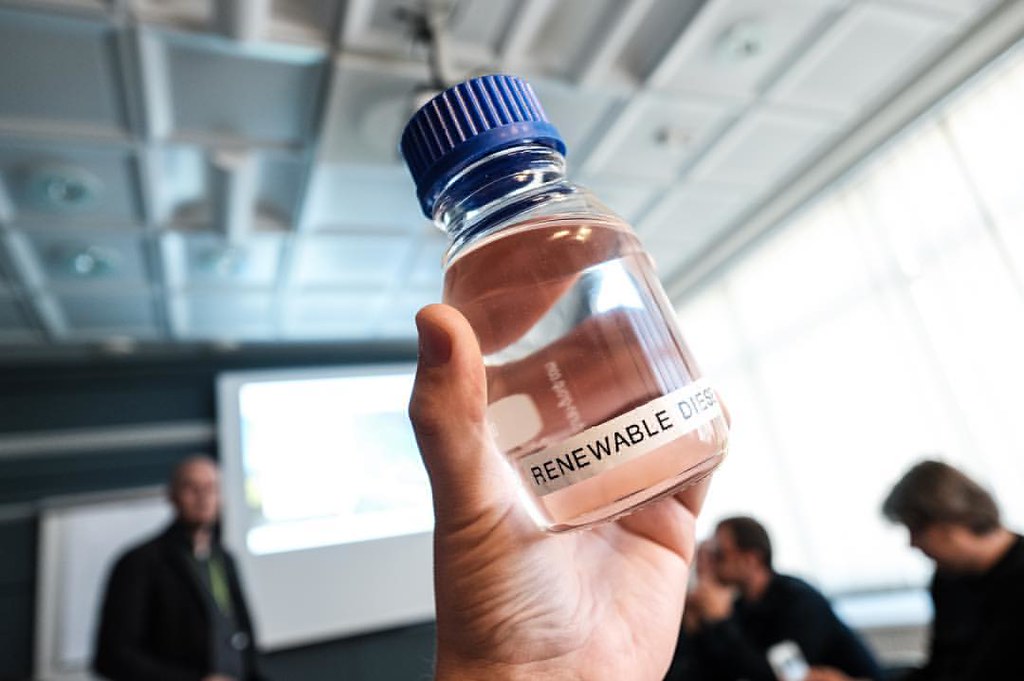As the world faces mounting challenges from climate change and energy insecurity, renewable energy is becoming a central focus for sustainable development. Among the many alternatives, renewable diesel has emerged as a powerful and versatile option that is gaining traction across industries. This article explores what renewable diesel is, who uses it, why it's becoming more popular, and how it differs from biodiesel.
**What is Renewable Diesel?**
Renewable diesel, also known as hydrotreated vegetable oil (HVO), is a biofuel made from organic materials such as vegetable oils, animal fats, and even algae. Unlike biodiesel, which is produced through a chemical process called transesterification, renewable diesel is created using hydrogenation. This involves treating the feedstock with hydrogen under high pressure and temperature, resulting in a fuel that is chemically identical to petroleum diesel.
This makes renewable diesel a drop-in replacement for traditional diesel, meaning it can be used in existing engines without any modifications. It’s also cleaner-burning and offers better performance in cold climates compared to some other biofuels.

**Production Process**
The production of renewable diesel involves several key stages:
- **Feedstock Collection:** Renewable diesel can be made from a variety of sources, including waste cooking oil, soybean oil, and even algae. The choice of feedstock often depends on cost, availability, and environmental impact.
- **Hydrogenation:** The collected feedstock is treated with hydrogen at high temperatures and pressures, breaking down complex molecules into simpler hydrocarbons.
- **Purification:** After hydrogenation, the product is purified to remove impurities, ensuring it meets strict quality standards.
**Who Uses Renewable Diesel?**
Renewable diesel is being adopted by a wide range of sectors due to its environmental and performance benefits:
- **Transportation:** Fleets of trucks, buses, and delivery vehicles are increasingly turning to renewable diesel to cut emissions and meet green regulations.
- **Aviation:** Airlines are testing renewable diesel blends as part of their efforts to reduce carbon footprints and move toward sustainable aviation fuels.
- **Marine Industry:** Shipping companies are adopting renewable diesel to comply with international emission rules and lower their environmental impact.
- **Agriculture:** Farmers use renewable diesel to power machinery, creating a closed-loop system where crops are grown for fuel and then used to run the equipment that grows them.
**Why Use Renewable Diesel?**
There are several strong reasons for the growing adoption of renewable diesel:
- **Environmental Benefits:** Renewable diesel significantly reduces greenhouse gas emissions, often by up to 80% compared to conventional diesel. It also produces fewer harmful pollutants like particulates and nitrogen oxides.
- **Performance:** It has a higher cetane number, leading to smoother combustion and better engine performance. It works well in cold weather and doesn’t require engine modifications.
- **Regulatory Compliance:** Many governments are pushing for greener energy solutions, and renewable diesel helps businesses and cities meet these targets.
- **Energy Security:** By relying on domestic feedstocks, countries can reduce dependence on foreign oil and support local agriculture and biofuel industries.
**Renewable Diesel vs. Biodiesel**
While both fuels come from renewable sources, they differ in production, chemistry, and performance:
- **Production:** Biodiesel is made via transesterification, while renewable diesel is produced through hydrogenation, making it chemically similar to petroleum diesel.
- **Chemical Structure:** Biodiesel contains oxygen, which can cause storage issues and engine compatibility problems. Renewable diesel lacks oxygen, offering greater stability.
- **Performance:** Renewable diesel performs better in cold weather and requires no engine changes, unlike some biodiesel blends.
- **Environmental Impact:** Renewable diesel typically offers more consistent and substantial emissions reductions than biodiesel.
**Challenges and Future Outlook**
Despite its advantages, renewable diesel still faces hurdles:
- **Feedstock Supply:** Availability and cost of raw materials can affect production scalability.
- **Cost:** The hydrogenation process is expensive, though costs are expected to decrease with technological advances.
- **Policy Support:** Government incentives and clear regulations are essential for long-term growth.
In conclusion, renewable diesel is a promising solution for reducing emissions and improving energy security. As technology improves and policies evolve, it is likely to play an even larger role in the global transition to clean energy. With its clean-burning properties and compatibility with current infrastructure, renewable diesel is not just an alternative—it’s a step toward a more sustainable future.
Motorcycle powder coating
Motorcycle Powder Coating,Motorcycle Powder Coating Wheels,Powder Coating A Motorcycle Frame,Powder Coating A Motorcycle
Chongqing Yitumei New Materials Co., Ltd. , https://www.cqettume.com